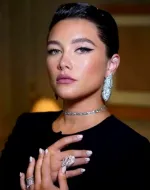Key Points
First Indian Presidential visit to Slovakia in 29 years
Memorial commemorates 400 lives lost escaping communist regime
Tribute highlights shared historical struggles for liberty
Strengthens diplomatic connections between India and Slovakia
The memorial commemorates those who lost their lives while attempting to flee Slovakia during the communist regime.
Unveiled in 2005, the Gate of Freedom Memorial sits below Devin Castle at the confluence of the rivers Morava and Danube in the capital of the Slovak Republic, right on the border with Austria.
This memorial signifies a time when the borders to the West were protected by barbed-wire fences charged with high-voltage electricity and attempts to escape from behind the Iron Curtain were punished by imprisonment. The concrete gate riddled with bullets and broken iron bars commemorates four hundred men and women who were killed at the border of then Czechoslovakia during their attempts to escape between 1945 and 1989.
The Iron Curtain was constructed to halt the free movement of people and stop the emigration from Soviet satellite states.
The expression Iron Curtain was introduced into Cold War terminology by Winston Churchill in a speech in March 1946 to describe the intensified border security between countries of the Eastern Bloc and the West. It refers both to the ideological divide between the two blocs and the physical border fortifications that the Eastern Bloc set up along its borders with the West. Its best-known and most intricate part was the Berlin Wall.
In 1989, the Iron Curtain came down altogether, as all Eastern European countries shed communism, the Soviet Union collapsed, and the Cold War ended. The military installations, watchtowers and barbed wire that used to secure this extremely sensitive spot back then were quickly removed after the Velvet Revolution in Czechoslovakia that ended communist rule.
The gate is made of white stone and its pillars are peppered with artificial bullet holes of border guards; however, the iron bars are broken as a symbol of the final victory of freedom.
Earlier, President Murmu held a meeting with her Slovakian counterpart, Peter Pellegrini, in Bratislava. The two leaders reviewed various facets of bilateral ties and agreed to work towards strengthening the bilateral ties across various sectors.
President Murmu was also accorded a traditional welcome as per Slavic traditions and accorded a Guard of Honour.
President Murmu arrived in Slovakia at the invitation of Pellegrini. It is the first visit by an Indian president to Slovakia in 29 years. She arrived in Slovakia after completing the first leg of her visit in Portugal.
Leave a Comment
Thank you! Your comment has been submitted successfully.







Reader Comments
We welcome thoughtful discussions from our readers. Please keep comments respectful and on-topic.